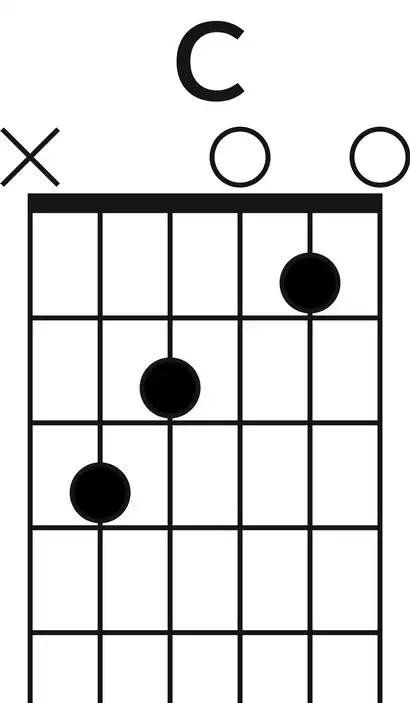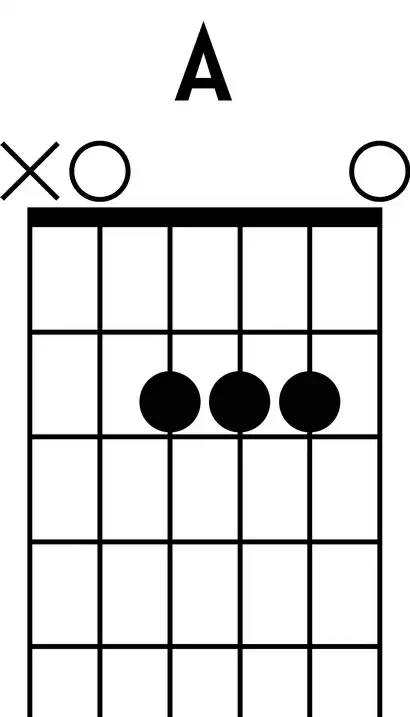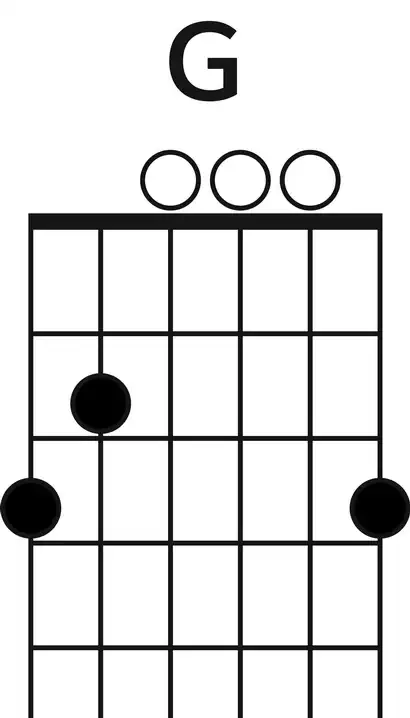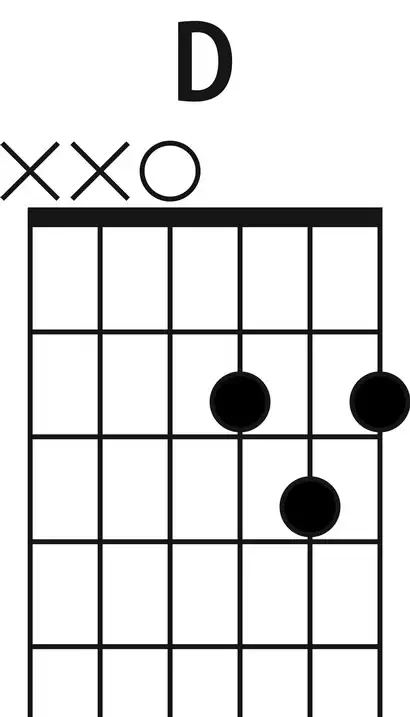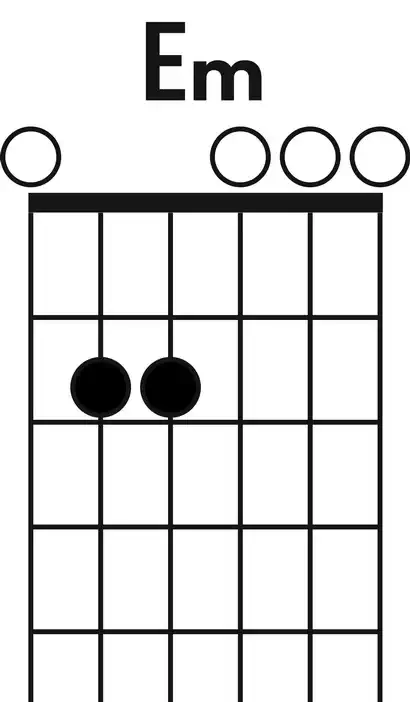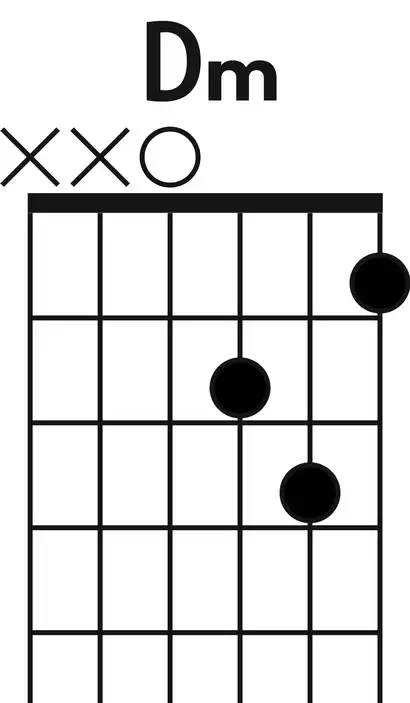If you're a relatively new guitarist, you may have just learned the names of the six strings. The next step is learning a few open chords. These classic chords are fairly easy to play and have a rich, expansive sound. Here's what you need to know about these chords and how to use them.
Open Chords: What You Need to Know
For most beginner guitarists, their first experience learning the guitar fretboard is with open chords (and often the minor pentatonic and/or major scale). Here's how to dive in!
1. What's An Open Chord?
In this list, we won't get too deep into music theory. Chords are generally named after their root notes, and they are usually combinations of at least three notes. For instance, a C major chord contains the notes C, E, and G.
Open chords are chords where the open strings (unfretted strings) are allowed to ring out. You might hear them described as "cowboy chords." Since learning to play these chords is the first step toward being a proficient rhythm guitarist, these chords have a bit of a reputation for being basic.
But it's entirely possible to play real music with these chords. Especially for beginners, barre chords can put a good bit of stress on your left hand (or fretting hand). When you're getting the hang of playing, starting off with an open chord is a smart move.
For an introduction to some great chords for beginners, check out this helpful video!
2. Famous Songs That Use Open Chords
You might be surprised at how many famous songs include guitar chords played mostly or entirely open. Here are some notable ones:
This video will take you through some hit songs you can play with just a few easy chords. And in the next section, we will go through the first eight open chord shapes you need to know.
3. Important Chords: C Major (C)
If you have a guitar teacher, you're likely to see a C major chord in the first chord progression or two you learn. This chord requires you to coordinate three fingers. It can be a little bit of a challenge at first. Here's the chord diagram:
To play this one, place your index finger on the second string at the first fret, your middle finger on the fourth string at the second fret, and your ring finger on the A string at the third fret.
The open C major chord can be a challenge for newer players, as you don't strum all the strings. Make sure you skip the sixth string! To see and hear C major, check out this video.
4. Important Chords: A Major (A)
This is one of the more important chord shapes, as you will need to use it to play root 5 barre chords eventually. Since it asks you to keep three fingers close together on the fretboard, it can be hard to master, especially if you have larger fingers. Make sure you don't accidentally mute one or more strings!. Here's the chord diagram and how to play it::
Take a look at this video to see and hear it for yourself!
5. Important Chords: G Major (G)
The warm, bright sound of G major is often found at the end of chord progressions. Here's the chord diagram and here's how to play it:
There is also another version of the G major chord called the "four-finger G." With this one, you fret both the first and second strings at the third fret, using your ring finger and fourth finger. This video shows you both versions.
6. Important Chords: E Major (E)
The E major chord is another important one for later on, too -- it's used to make root 6 barre chords. Here's the diagram for the E major chord shape and here's how to play it:
7. Important Chords: D Major (D)
The D major chord has a bright, cheerful sound. Here's the chord diagram and here's how to play a D major chord:
Check out this video to hear and see the D major chord being played.
8. Important Chords: A Minor (Am)
Most chord progressions sound a bit more interesting with a minor chord or two thrown in. And usually, you'll learn open minor chords fairly early on in your guitar journey.
The open A minor chord sounds good in a variety of chord progressions, and it also is important for playing the minor versions of root 5 barre chords. Here's the chord diagram and here's how to play it:
Here's a quick and easy tutorial on how to play A minor!
9. Important Chords: E Minor (Em)
The sad-sounding E minor chord is another beginner essential. It's also important for playing the minor versions of root 6 barre chords. Here's the chord diagram and here's how to play an E minor chord:
10. Important Chords: D Minor (Dm)
This is one of the more difficult minor chords to play, as it's easy to accidentally move a finger up or down a string. Here's the chord diagram and here's how to play it:
11. Should You Learn More Than Open Chords?
Once you know how to play the above chords, you'll be able to play a variety of songs. But don't stop there!
Learning to play barre chords can help you level up your playing. With barred guitar chords, you don't have to worry about many different fingerings, as these chords follow a certain pattern.
Before moving on to barre chords, though, make sure that you can change chords smoothly. You can even start by switching between two chords. It's also a good idea to be comfortable with a variety of strumming patterns.
For a helpful intro to learning barre chords, check out this useful video.
12. Do Open Chords Sound Better?
Some people may think so. When you play a chord open, it has a "big" sound with plenty of sustain. Barre chords don't always offer this, but they can have a more tight, focused sound that works especially well for faster chord progressions.
Which type sounds better depends on the context and your personal preferences. Don't be afraid to experiment with both! This video offers some tips on how to make all of your chords sound great -- whether they're open or barred.
Want to Learn More?
Whether you're trying to learn some new chord progressions or improve your technique while you're still fairly new to learning guitar, an online lesson program or guitar learning site can help.
That's especially important when you're first learning chords -- if you learn how to place your fingers on the strings, switch between chords, etc. early on, you'll save yourself countless mistakes later. Plus, online guitar lessons tend to be much cheaper than in-person lessons!
Final Thoughts
Learning open chords is an essential part of being a well-rounded guitarist. Whether you want to go on to become a shredder, fingerstyle player, or something else, knowing how to play chords this way is essential. But what do you think? Did we leave out any important information? Let us know in the comments, and please don't forget to like and share if you found this list useful!

